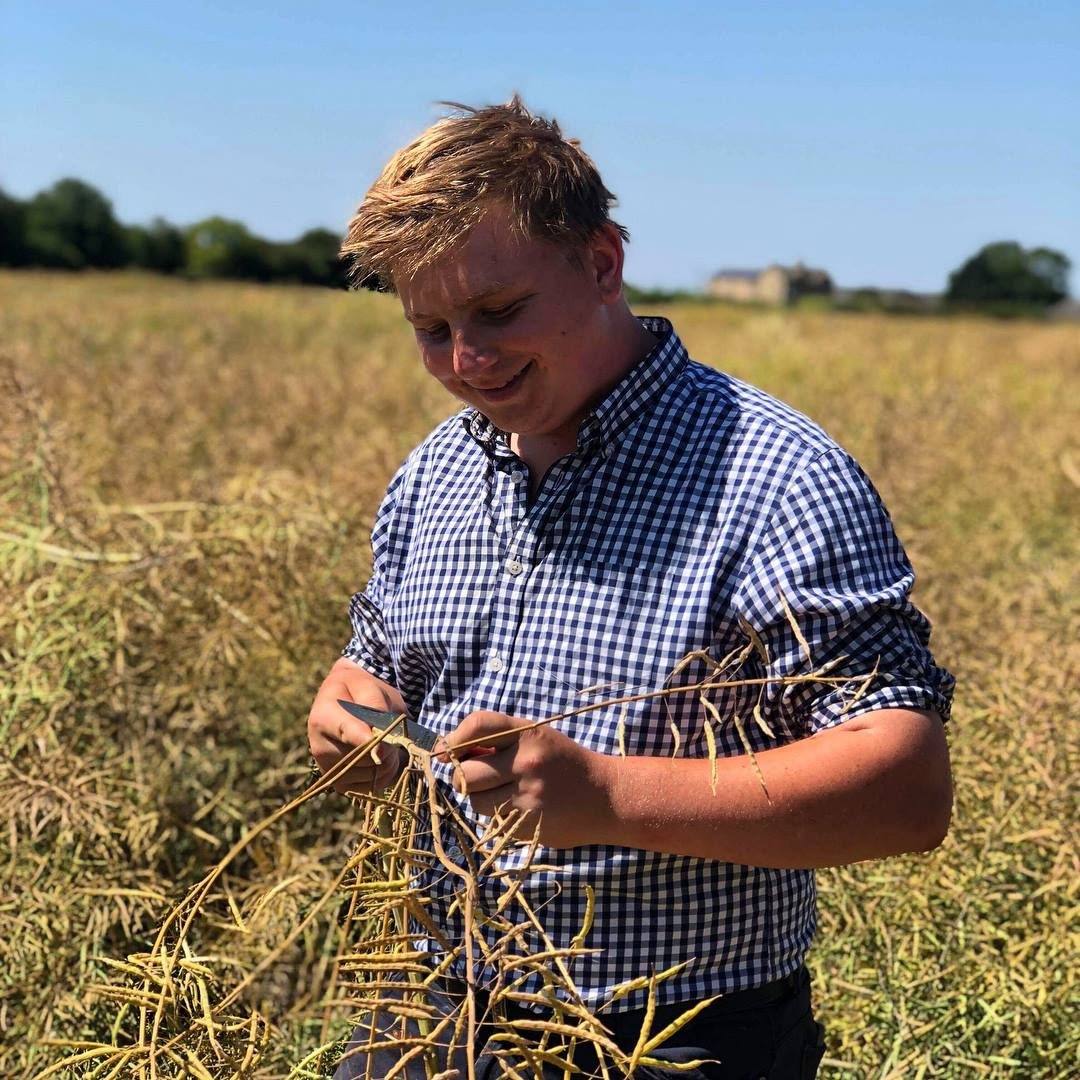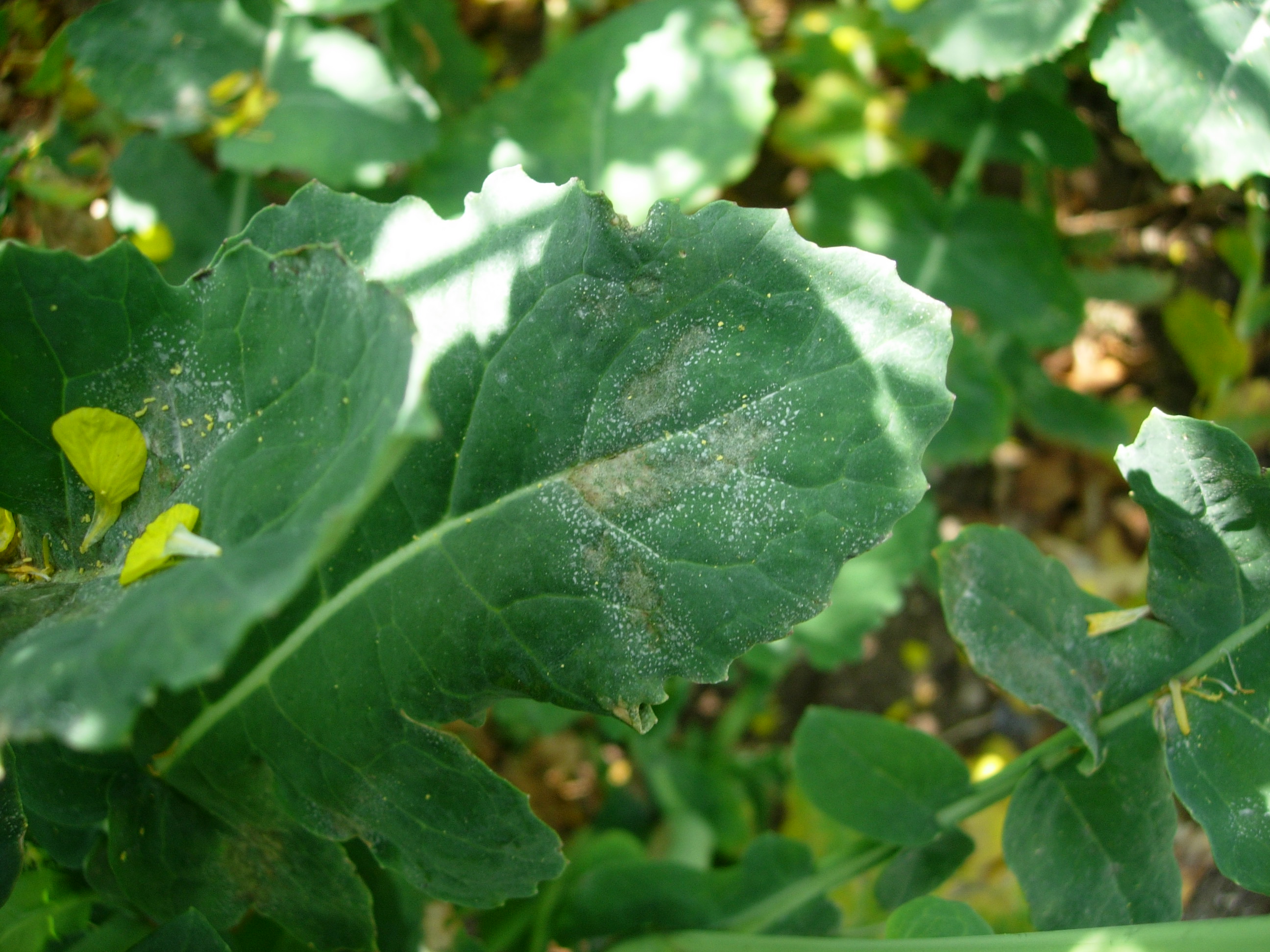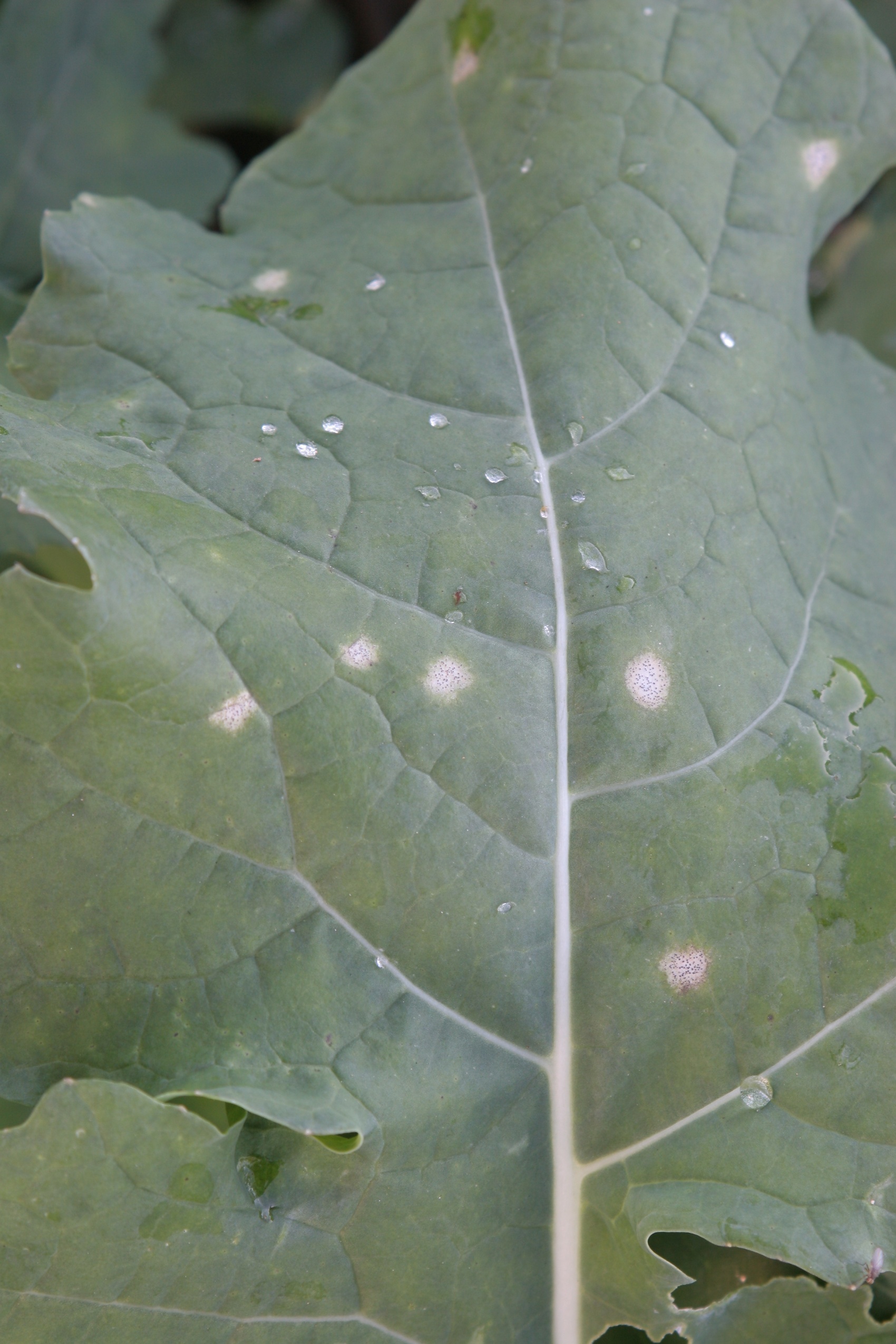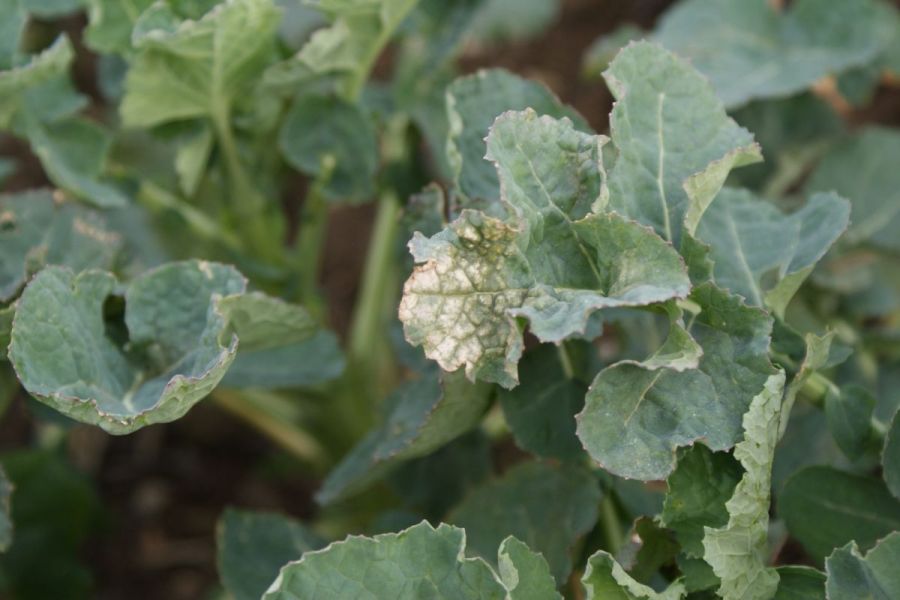Leaf disease may have been the least of oilseed rape growers’ problems recently but remain a potential threat over the coming months. CPM looks at how technology is enabling disease detection during the visually undetectable latent phase to help keep on top of the spot.
Fungicides are more effective when applied protectively prior to substantial infection.
By Ben Adams
Having a decent oilseed rape crop going into winter is a bonus these days, with so much dependent on flight plans of the cabbage stem flea beetle. But even when successfully established, they’re not out of the woods and leaf spot diseases can still cause nasty surprises.
“Light leaf spot can cause yield losses in many ways, such as reducing photosynthetic leaf area, stunting, reducing nutrient use efficiency and the very economically important symptom, pod shatter,” according to Dr James Fortune, plant pathology research consultant at ADAS Boxworth.

Light leaf spot can grow in the plant for up to 8- 12 weeks without displaying symptoms, making one of the biggest challenges in controlling the disease being lack of awareness of the infection until visible signs emerge, says James Fortune.
Caused by the pathogen Pyrenopeziza brassicae, light leaf spot is a polycyclic disease capable of producing numerous infection cycles per season. This capability is what makes it so tough to control, because the fungus repeatedly releases spores which infect new growth.
So how does it spread? Establishing new OSR crops in the vicinity of recently combined OSR fields can increase the threat from airborne ascospores, which can lead to early infection.
“These ascospores are released from apothecia which develop on crop debris and are then wind dispersed, later germinating on leaf surfaces in the autumn when germ tubes penetrate directly through the cuticle.
“This is when the extended phase of asymptomatic growth occurs,” explains James, with the pathogen growing within the sub-cuticular space between the epidermis and the cuticle of the leaf. “Light leaf spot can grow in the plant for up to 8-12 weeks without displaying symptoms, making one of the biggest challenges in controlling the disease being lack of awareness of the infection until visible signs emerge” he says.
After this initial infection, the pathogen produces acervuli on leaf lesions. “The disease is then dispersed within the crop via rain-splash spores, these infect new leaves, stems and pods on the host and neighbouring plants causing secondary infections,” continues James.
The disease can develop between 4-20°C, with wet conditions ideal for disease infection and spread. Initially, light-green circular lesions appear in late autumn or early winter on the leaf surface – often in association with trapped water droplets – in distinct patches within the crop.

Light leaf spot is a polycyclic disease capable of producing numerous infection cycles per season.
Different to the polycyclic nature of light leaf spot, phoma stem canker is a monocyclic disease but is still initiated in autumn by ascospores released from crop debris from the previous cropping season. This trash presence can also become more of an issue with more people adopting min-till techniques for establishment, points out James.
“Phoma is caused by two similar co-existing fungal species – Leptosphaeria maculans (phoma A) and L. biglobosa (phoma B). The leaf lesions caused by these two pathogens are very different; with phoma B forming smaller, darker, and more defined lesions which often get overlooked or misidentified as alternaria dark spot in the autumn.”
Germinated ascospores penetrate leaves of OSR through stomata, he explains. “On leaves, phoma A causes large phoma leaf spot lesions with many pycnidia, while phoma B causes small dark lesions with no or few pycnidia. On stems, phoma A is often associated with damaging stem base cankers, whereas phoma B is generally correlated with superficial upper stem lesions with dark margins.
“It’s important to regularly monitor crops from early autumn onwards and prior to stem extension for light leaf spot and apply fungicides for control if necessary. AHDB fungicide performance data demonstrates that azoles and non-azole fungicides are effective against this disease and half-rates are sufficient for good control,” says James.

Phoma stem canker is a monocyclic disease but is still initiated in autumn by ascospores released from crop debris from the previous cropping season.
Usually, in high-risk situations – for example, susceptible varieties, where the disease is present – the first light leaf spot spray timing occurs in November. This may coincide with the first or second fungicide application for phoma, which will require the selection of a product with efficacy against both diseases, such as Proline (prothioconazole) or Aviator Xpro (bixafen+ prothioconazole).
With phoma, James says both cultivar resistance and fungicides can be used effectively to manage the disease. “Apply fungicides once 10-20% plants are affected by phoma leaf spot in the autumn, with a follow up fungicide application on reinfection.”
Although chemistry is available, sufficient control often depends on a combination of cultural measures and well-timed sprays. Andrew Wells, an agronomist for Arable Alliance and AICC member, believes the starting point for tackling the leaf spot diseases always goes back to variety selection.
“Most varieties score 6 or 7 for disease resistance, with only a few with an 8 or 9. There are not many lower scoring varieties either, but these variety scores will influence the spend on the crop.”
There’s an increasing trend for early drilling to manage the risk of CSFB on establishing crops, which subsequently increases the risk from phoma infection, says Andrew. “It’s most damaging on early planted plants with higher plant populations as they tend to have smaller stems, so disease is able to take hold and stop nutrient and water uptake much more easily.”
Across the growing season, one or two phoma fungicide sprays are usually applied across Andrew’s OSR area in Lincolnshire and Nottinghamshire. “You often see phoma in autumn but not light leaf spot until after Christmas.”

Phoma is most damaging on early planted plants with higher plant populations as they tend to have smaller stems, so disease is able to take hold and stop nutrient and water uptake much more easily, says Andrew Wells.
But in a high-risk situation (an early sown susceptible variety), the first phoma spray may be applied as early as October, he says. “It’s possible to pick up light leaf spot when the disease appears and treat then if it hasn’t received a fungicide in autumn, but crops can benefit from a 0.2-0.3t/ha yield uplift from an autumn treatment. The average rainfall in September and October is a key driver for phoma leaf spot infections.”
This is backed up from research carried out in 2016/17 by AHDB, which found a November fungicide spray gave a yield response of 0.37t/ha compared with a fungicide spray in November and March, which gave a yield response of 0.41t/ha. As rainfall and leaf wetness is very important for phoma and light leaf spot development in the crop, Andrew uses the AHDB predictive model for phoma/light leaf spot which monitors rainfall and predicted infection status.
An autumn light leaf spot fungicide application may coincide with the first or second application for phoma, so a product with efficacy against both diseases is preferable. There have been the same actives used for several years, says Andrew, but prothioconazole and tebuconazole still provide control at lower rates, with appropriate fungicide dose depending on the site and the year.
Andrew agrees with James that half doses can give good control in England and Wales, but with a proviso. “Half rate or even less can be sufficient for control and often we can tank mix to reduce passes. But in a wet autumn which favours phoma, two sprays may be used, however, high-risk crops may require higher doses. Last year crops generally required none or just one autumn fungicide application.”
Although the importance of identifying light leaf spot and nipping infection in the bud with timely fungicide applications is appreciated, it’s not so easy to do in practice. The disease isn’t easy to detect in the early stages of infection as it has a latent phase when no symptoms are yet visible. That’s where testing can come in very useful and save a lot of space in the airing cupboard, where leaf samples have traditionally been incubated in plastic bags to forward the development of the disease.
Andrew uses SpotCheck every year, normally in January/February. The service is run by ADAS and funded by Bayer. In 2021/22, SpotCheck assessed 340 samples from OSR crops from across the whole of the UK, with positive samples across the regions, not just northern areas where the disease has historically been more prevalent.
The free SpotCheck service can provide agronomists and growers with identification of light leaf spot prevalence in OSR crops. Andrew says it gives assurance and he uses it as a decision support aid, particularly for susceptible varieties. “It reinforces field observations and gives you the confidence whether to treat or not. If the service were to start charging, I would still use it depending on the cost.”
Philip Walker, arable plant pathologist at ADAS Boxworth, emphasises the importance of fungicide timings and how diagnostic tests can help with this. “Fungicides are more effective when applied protectively prior to substantial infection. Initiatives such as like SpotCheck can help identify the disease symptoms at the initial stages and better target those applications.
“Timely fungicide applications are key for good control as they are generally less effective when used in a highly curative situation.”
Philip also warns to be wary of potential weather changes. “The epidemic in autumn 2021 started at a similar time to the previous season, with light leaf spot found in November and infection increasing in most growing regions from December to February. The disease progressed rapidly as the temperatures warmed in the early spring, with 78% of samples tested in February and 86% in March showing signs of infection.”
Richard Williams, market development agronomist at Bayer and based in Herefordshire, has looked after the SpotCheck programme for the past 14 months. He explains the test can also detect other key diseases such as downy mildew, powdery mildew and phoma, as well as light leaf spot. This is done through a representative sample of 30 freshly harvested leaves, which are then incubated for 48 hours before being assessed under a microscope.
A report generated by ADAS for the SpotCheck initiative found the testing often follows the ratings on the AHDB Recommended List closely, highlighting the importance of variety selection. “Last year there were 62 positive infection results from varieties which had a light leaf spot resistance rating of 4, and six positive infection results from varieties which had a resistance rating of 8.”
Last year, out all the samples received around half of submitted leaves were infected. The programme runs from 1 October to 31 March and uptake is normally busy in October to November, then picks up again in February to March.
But as technology improves at a relentless pace, so does the opportunity to take disease testing up to another level.
A DNA test option comes from SwiftDetect, which is launching a test for light leaf spot this September. The technology was originally developed by Microgenetics as a pharmaceutical sterility test, before being adapted and released for wheat in 2021 and barley earlier this year.
The method allows for the quantification of pathogens, according to Chris Steele, crop diagnostics products manager at Microgenetics. “The patented SwiftDetect method offers unique sensitivity and speed compared with traditional qPCR tests, with a one business day turnaround.
“Identifying the disease as soon as possible is key to control, given how quickly spores can be released and spread, and the difficulty of detecting infections by eye. From the trials we’ve carried out, it’s been found that with very low levels of infection sometimes you don’t need to treat them.”
Trials with SRUC in Scotland and those with the ADAPT Group (made up of Horsch, Adama, DSV, Interagro and Microgenetics) in Nottinghamshire have also been carried out. “The trials have continuously shown the link between disease pressure and rainfall. But they have found the RL is useful but not always gospel,” explains Chris.
“Last year two varieties with a disease resistance score of 5, growing next to each other, showed vast differences in trials. One variety showed signs of disease in the autumn and the comparative crop adjacent showed no sign of infection until late January.”
Chris sees the benefit of the test is to give an early warning, which is important in the latent period when crops are infected. “Once you see symptoms it’s too late. By tailoring treatment according to disease levels, it allows you to be efficient and effective, plus save money.”
This decision-making tool can also be seen as an important part of IPM, justifying an application, he believes. Microgenetics don’t currently give agronomy advice, but next season may give suggestions.
The results are shown via a traffic light system, with a scale from blue, green, yellow, red (red indicating a prominent level of infection). Plus, a score of the number of live infectious pathogens of the representative 10 leaf sample. Chris sees this as an important distinction of the test.
Chris says the test will be available for phoma and sclerotinia in autumn next year, so the company could soon offer bundles for OSR diseases – light leaf spot, phoma and sclerotinia with just one test.
This article was taken from the latest issue of CPM. For more articles like this, subscribe here.




